Indoor spaces are meant to be safe havens, providing comfort and shelter. However, the presence of mycotoxins, toxic compounds produced by moulds, can threaten the structural integrity of buildings and the health of occupants.
In Australia, with its diverse climate and environmental conditions, identifying the presence of mycotoxins in indoor spaces is crucial for maintaining healthy living environments. Let’s explore the methods and considerations for detecting these hidden contaminants.

Understanding the Need for Identification:
Mycotoxins are byproducts of certain moulds, and their presence indoors can lead to various health issues. Identifying the presence of mycotoxins is essential for several reasons. Firstly, moulds that thrive in damp and humid conditions often produce mycotoxins, making Australia, with its varying climates, particularly susceptible.
Secondly, the symptoms of mycotoxin exposure are broad and can often be mistaken for other health issues. Thus, identifying mycotoxins helps in accurate diagnosis and targeted remediation efforts.
Visual Inspection:
The first step in identifying the presence of mycotoxins is often a visual inspection of the indoor space. Mould growth is a visible sign that mycotoxins might be present. Check for mould in moisture-prone areas, such as bathrooms, basements, and windows.
Look for discolouration on walls, ceilings, and other surfaces. However, it’s important to note that not all moulds produce mycotoxins, and not all mycotoxins are visible to the naked eye.
Professional Inspection and Testing:
While visual inspection can be a helpful initial step, professional inspection and testing are crucial for accurately identifying mycotoxins. Experts like Jason Chapple and Graham Singleton from Air Quality Australia specialise in indoor air quality testing, including mycotoxin testing. They use advanced techniques to collect air and surface samples, which are then analysed in a laboratory for the presence of mycotoxins.
Air sampling involves collecting air from the indoor environment, allowing experts to assess the concentration of airborne mould spores and mycotoxins. Surface sampling is done by swabbing or tape lifting on potentially contaminated surfaces. Both methods provide valuable information about the extent and type of mycotoxin contamination.
Consideration of Specific Mycotoxins:
Different moulds produce different types of mycotoxins, and the identification process often involves consideration of specific mycotoxins relevant to the indoor environment. For example, Stachybotrys chartarum, commonly known as black mould, produces mycotoxins called trichothecenes. Aspergillus moulds can produce aflatoxins. Knowing the specific mycotoxins associated with certain moulds helps in targeted testing and remediation strategies.
Regional Factors and Climate Considerations:
Australia’s diverse climate, ranging from tropical in the north to temperate in the south, influences the types of moulds and mycotoxins that may be present indoors.
In humid coastal areas, moulds like Aspergillus and Penicillium may thrive, potentially producing ochratoxin A. In tropical regions, Stachybotrys chartarum may be more prevalent.
Understanding regional factors and climate considerations is crucial for tailored identification strategies. Professionals conducting indoor air quality testing in Australia consider these factors to provide accurate assessments.
Symptom-Based Assessment:
The health symptoms experienced by occupants can also provide valuable clues about the potential presence of mycotoxins. Respiratory issues, skin irritation, fatigue, and headaches are common symptoms associated with mycotoxin exposure. If multiple occupants report similar symptoms and other potential causes are ruled out, it may prompt further investigation for mycotoxin presence.
However, it’s important to note that symptoms alone are insufficient for conclusive identification of mycotoxins. Professional testing is essential to confirm the presence and type of mycotoxins in the indoor environment.
Awareness of Building Materials and Construction Practices:
Certain building materials and construction practices can contribute to mycotoxin growth. For example, materials prone to moisture absorption, such as drywall and wood, create favourable conditions for mould and mycotoxin development. Identifying the types of materials used in construction and their potential for harbouring mould is crucial for targeted testing.
Regulatory Compliance and Guidelines:
While there are regulations and guidelines in Australia addressing indoor air quality, specific regulations regarding mycotoxin levels are still evolving. However, adherence to general indoor air quality standards can indirectly minimise mycotoxin contamination. Understanding these standards and guidelines can guide professionals in conducting thorough testing and ensuring compliance with established norms.
Remediation and Prevention Strategies:
Upon identification of mycotoxin presence, effective remediation and prevention strategies become paramount. Professional remediation services can include thorough cleaning, removal of contaminated materials, and addressing underlying moisture issues. Prevention strategies may involve improving ventilation, using mould-resistant materials, and maintaining optimal indoor humidity levels.
Educating Homeowners and Occupants:
Education plays a crucial role in identifying and preventing mycotoxins in indoor spaces. Homeowners and occupants should be informed about the potential risks of mould and mycotoxins and the importance of prompt identification and remediation.
Awareness campaigns and educational materials can empower individuals to take proactive measures for a healthier indoor environment.

Conclusion: Empowering Healthier Indoor Environments:
Identifying the presence of mycotoxins in indoor spaces in Australia requires a multifaceted approach. The process is comprehensive, from visual inspection to professional testing, consideration of regional factors to awareness of specific mycotoxins. Professionals like Jason Chapple and Graham Singleton from Air Quality Australia bring expertise to the forefront, using advanced testing methods to ensure accurate identification.
As we navigate the challenges posed by mycotoxins in Australia’s diverse climate, staying informed and proactive is the key to healthier indoor environments. By employing systematic identification methods and collaborating with experts, homeowners and occupants can create living spaces that safeguard structural integrity and human health. In the pursuit of healthier indoor air quality, the identification of mycotoxins becomes an essential step toward fostering well-being and resilience in the places we call home

